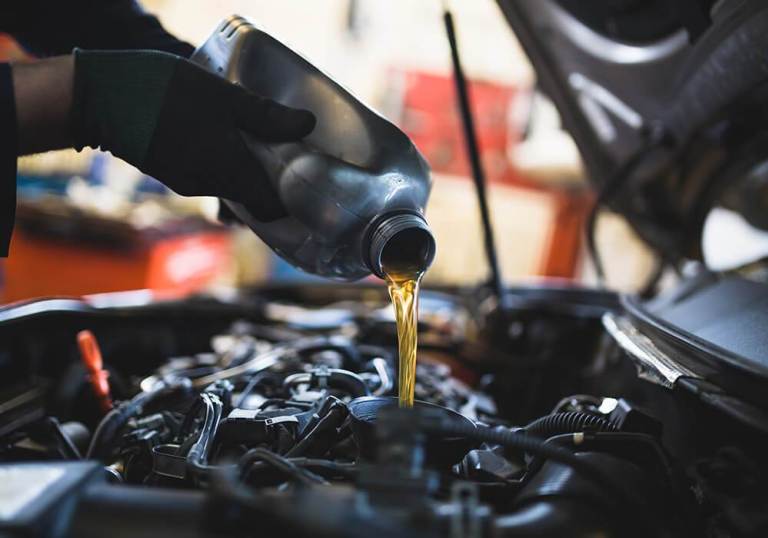Know your car
Engine and Cooling
Engines create a lot of heat. This heat would cause a complete breakdown if it was not controlled and this is the job of the cooling system.
Problems show up as:
The temperature gauge shows a high reading, especially when the vehicle has a heavy load or is travelling up hill. The temperature gauge moves from normal to hot and back again. The vehicle could smell ‘hot’. Steam may come from the radiator.
Solution:
It can be as simple as filling the system with a coolant/water solution. If that does not work then a flush of the cooling system may be needed. The thermostat, seals, water pump and hoses may need replacing in severe cases. The worst case, a new radiator as well as water pump may need to be fitted.
Hint:
Have your technician test the coolant and cooling system at each service, [the good ones will already do this]. The cooling solution has a limited life and should be tested and changed on a regular basis. If the vehicle is hot put your heater to maximum heat and the fan to full as this can help, stop as soon as safe to do so, wait till the system cools try moving again and if the same happens call us now!
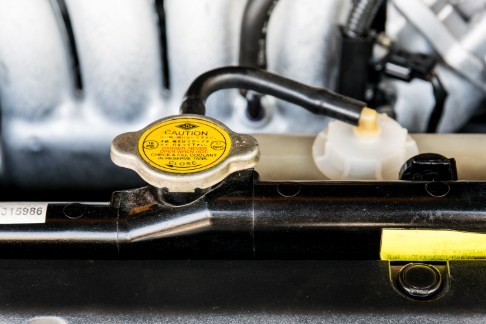
The 3 ‘Rs’ of servicing: Reliability | Resale Value | Safety
Yes the third is an ‘S’ but it’s REALLY important.
99% of problems start from the lack of servicing.
Solution:
Keep your vehicle serviced by the best people to explain to you ‘How often’ is best. That is us of course!
Benefits:
• Your vehicle will be safer.
• Your vehicle will be more reliable.
• You will get a better price for your vehicle when you sell it.
• You will save money on fuel.
• Your vehicle will last longer before you need to replace it.
• You will be less likely to face large repair bills.
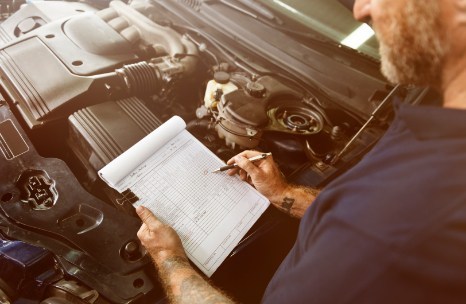
A Cambelt (or timing belt) is just that, a belt. This belt keeps many major moving parts of the engine working in unison. Without it the engine would not run.
Problems show up as:
What happens is that the belt can fail and this is called an ‘instantaneous unforeseen failure’. Your engine will stop immediately, which is highly dangerous if travelling at higher speeds. Most failures result in significant damage and costs.
Solution:
Manufacturers will recommend replacement intervals based on age and/or kilometers travelled. The timing belt should be replaced as indicated by them. Other components that are run with the timing belt (water pump, idle pulleys etc.) may need to be replaced at the same time.
Hint:
Talk to us if you do not know when your timing belt should be replaced. Prices vary on different makes and models due to engine design and complexity. We are here to help keep you on the road!
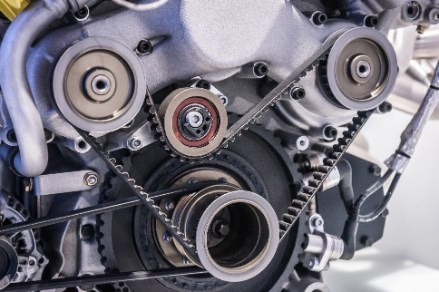
To understand the importance of filters it is best to look at the fuel. Diesel fuel is inherently unstable and debris formed by the natural process of degradation, [think of milk turning into cottage cheese], accumulates in the tank. This is commonly referred to as Bio-film. Bio-film plugs filters— A side issue of diesel fuel is that water [condensation] can accumulate in the fuel tank. Water reaching the engine thru the fuel system can result in engine failure. Common rail diesel engines when running return unused fuel to the tank. This fuel has passed through a high pressure system and has been heated which can speed up the degradation process.
Problems show up as:
Poor Engine Performance — High Fuel use — Excessive Exhaust Smoke — Hard Starting
Action:
Have the filter checked and replaced on a very regular basis. Our team of technicians will advise you on how often. In some cases a second filter installed in the fuel line will be recommended by our technicians, more likely on Common Rail Diesel motors.
Hint:
Don’t leave diesel fuel sitting in your tank if you are not using the vehicle for long periods. Bio-film will build up. Seek advice from us, as soon as you purchase the vehicle and follow their recommendations.
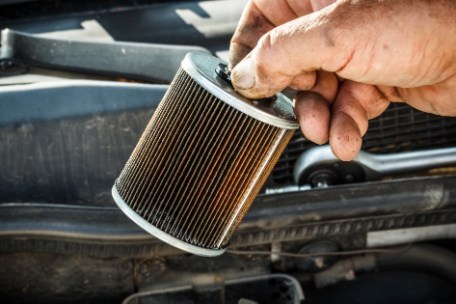
Common Rail Diesel Injectors operate within a very high pressure system to deliver a fine spray of diesel to each cylinder of your engine. This system allows for engines to be started easily when cold. They are a very important piece of the engine fuel system.
Problems show up as:
Excessive Exhaust Smoke — Poor Starting — Loud Combustion Noise — High Diesel Consumption.
Action:
There are additives that can be added to your fuel tank that help to keep the system clean and the injectors running smooth ask our technician which is best. This is a stop gap measure and a professional clean of the injector system will be needed. The cleaning can only be carried out by professionals with a test-bed machine. The process requires the injectors to be stripped down, examined, pressure flow tested and cleaned. Some of the parts require examination under a microscope. Best result is the examination and clean are all that is required, next result is that parts fail and must be replaced, worst result is the barrel is warped and a whole new injector will be required.
Hint:
Don’t leave diesel fuel sitting in your tank if you are not using the vehicle for long periods. Seek advice from our friendly staff as soon as you purchase the vehicle and follow their recommendations. The cost of replacing the injectors will run into the $000’s
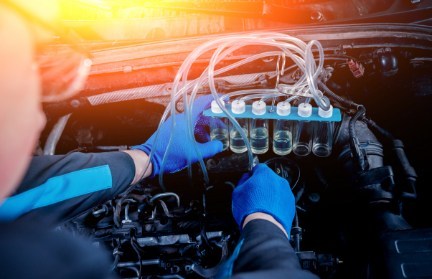
Just about every modern vehicle sold these days can be had with air conditioning. It’s so common that most people take it for granted. You press the button for air conditioning in your car and presto! cold air starts to flow out of the car’s vents. It’s easy, it’s simple, and it’s a major convenience. The principles of evaporation and condensation are utilized in your car’s A/C system by a series of components that are connected by tubing and hoses. There are six basic components: the compressor, condenser, receiver-drier, thermostatic expansion valve, the evaporator and most importantly, refrigerant.
Problems show up as:
On a modern and relatively new vehicle, it is rare to have problems. And if there are problems, they are pretty much one of two things: No cool air or insufficient cool air.
Solution:
Most A/C repairs are best left to a repair shop. Recharging the refrigerant, in particular, requires special equipment. Keeping your A/C System regularly checked by our team will prevent most problems from occurring.
Tip:
We recommend running your A/C system regularly, even in winter, as the refrigerant contains a light mineral oil to keep the compressor properly lubricated. The general rule of thumb is 10 minutes per month.
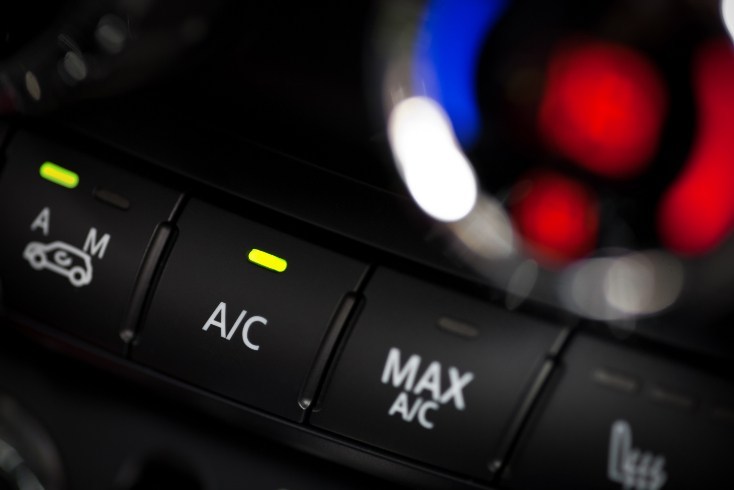
Automatic Transmissions (Gearbox) have a lubricating fluid and filter in them. Like engine oil they get dirty and worn out. Most transmission problems cannot be fixed by the vehicle owner. Too many pieces of specialized equipment & tools are needed.
Problems show up as:
There are two types of problems, put simply, your vehicle won’t move/go into gear or it won’t move smoothly (changes poorly or not at all).
Solution:
1st Check the fluid level, if low, top up. This is only a temporary fix as it means you have a leak.
2nd Replace the fluid and filter. This can be complicated as a lot of filters are located inside the transmission itself. 3rd (Most likely all that will be needed) Change the fluid and/or the filter. Specialized equipment needed. It is recommended that you have this done on a regular basis. About every 30,000 km.
The worse case: A complete tear down, recondition and rebuild will be needed.
Hint:
Get your Technician to check the fluid level and condition at each service [the good ones already do this]. Towing can put stress on your transmission. Before setting out have your technician check it out. After all sitting by the beach is better than the side of the road.
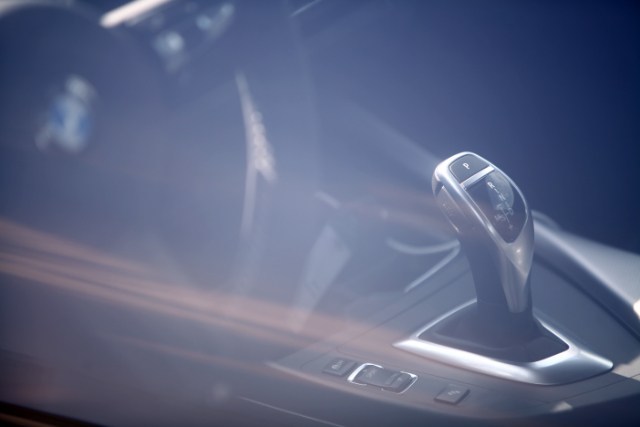
These vehicles have 2 motors:
1. An internal combustion engine (ICE) or as most of us know it as ‘the engine’. These engines can be petrol, diesel, LPG or even Hydrogen.
2. An electric motor or in some case several of them.
There are many combinations of how they drive your vehicle. Such as
Electric for start and slow driving switching to ICE for fast or long range/duration driving
Straight electric with the ICE charging the battery pack as you go.
The ICE running a generator which powers the electric motor(s).
One common factor is that they all contain motors that need to be serviced on a regular basis.
Problems:
Some of these depend on the engine combination in your vehicle.
Poor starting or failure to start, excessive exhaust smoke, slow response from the engine, excessive fuel use, engine juddering or surging, or battery failure.
Most of these types of vehicle carry a second battery. Usually as a battery pack in a compartment that only technicians can access. Batteries need to be maintained as well. Ask your technician for a battery condition report at each service. Early detection of issues can save you thousands.
Hint:
Read your owner’s manual for the best way to run your vehicle. It may surprise you!
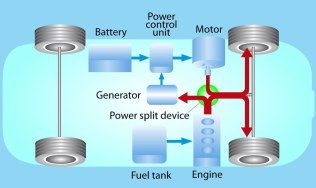
Suspension and Chassis
Braking systems create a lot of HEAT when in use. This heat can cause warping, bending, glazing and wear on the brake components.
Problems show up as:
— Shuddering
— Pedal Pulsing
— Squeak or Squeal
— Poor or Slow Response
— Brake Fade
Solution:
Replacing the brake pads, in most cases, is the answer but on occasion the Disc Rotor surface will need machining.
The worst case:
The Disc Rotors are too thin to be machined and will need to be replaced along with the pads.
Hint:
Get your Technician to check your brakes at each service [the good ones already do this].
Refrain from getting cold water (such as when you wash the vehicle) on HOT brake parts especially after heavy braking periods.
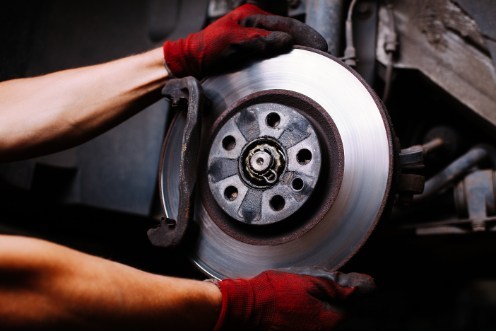
The CV Joint allows the wheels on your vehicle to move up, down, left and right while moving. The CV Boot protects the joint from dirt & water that gets sprayed up from your tyres. It also keeps the grease where it should. Escaping grease can be flicked onto brake components causing problems and additional costs.
Problems show up as:
Usually you will hear a ‘clacking’ sound as you turn your vehicle but by this stage the CV Joint is already worn and needs replacing.
Solution:
Best Case: Your Technician has found that the CV Boot is cracked or torn. Hopefully no damage has been done to the joint. The CV Boot is easily replaced.
Worse Case: The CV Joint has started clacking which means it will have to be replaced. It is best to replace the CV Boot at the same time.
Hint:
Make sure your technician checks the CV Boots at each service [the good ones already do this]. Problems caught early keep repair costs down. Ask if they have greased the joint as this will help maintain the joint. CV Joints will wear even if the boots are kept in good condition. Once your Technician has detected wear in the joint they will advise you on how long before a replacement will be needed.
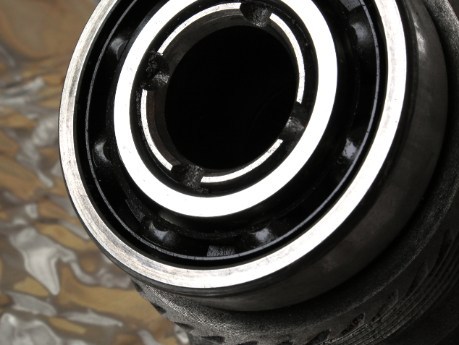
It’s generally thought that shock absorbers are a component of the suspension. This is not the case. Shock absorbers control the movement of springs & suspension. They smooth out bumps and vibrations. BUT most importantly they keep your Tyres in contact with the road. This ensures the safe control & braking response of the vehicle.
THERE ARE 3 TYPES
1. CONVENTIONAL TELESCOPIC
These are the simplest form and are replaced rather than repaired.
2. STRUT TYPE
These replace some of the suspension system and are more ruggedly built. They come is sealed (non-repairable) and repairable forms.
3. SPRING SEAT
Incorporates characteristics of the above 2 types. They are not designed to take high side loadings like Strut types are. They are sealed and therefore require replacing.
WARNING SIGNS
Nose diving when braking hard, excessive bounce, bottoming out when hitting pot holes, body roll in corners or windy conditions. Other problems that occur but may have different causes are steering wheel vibration & uneven tyre wear.
Hint:
Because wear does happen over time and you might change your driving style (without even noticing you are) to compensate! Good shock absorbers increase your chancess of stopping before an accident rather than being part of it. Have our guys inspect your shock absorbers at your next service.
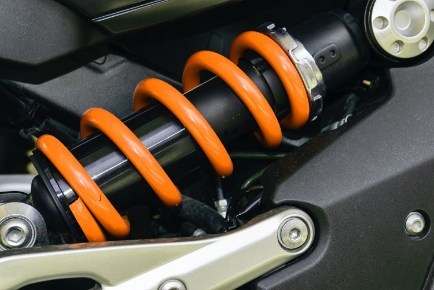
Electrical Systems
Most vehicle systems are controlled by ‘computers’. They have no moving parts and therefore nothing can be checked by taking them apart. They must be plugged into an Electronic Scan Tool which detects the faults and relays them to the technician.
Problems show up as:
On most occasions there is no telling sign, or it may be a warning light on the dashboard. Other times the vehicle may seem to be working fine but you notice that it is performing unusually.
Action:
By allowing our experienced technicians to connect a scan tool to your vehicle you can help speed up the time taken to diagnose the problem and therefore the time taken to fix it. This tool allows us access to all the systems including the brake, air bag, engine management and automatic transmission. Maintaining these in the optimum setting saves you time and costs and most of all gives peace of mind knowing your vehicle is safe.
Hint:
Everything may appear good on the outside when you visit your doctor but a blood test reveals the true nature of your inside. A scan tool is the blood test for your vehicle, a great way of finding small items before they become major problems.
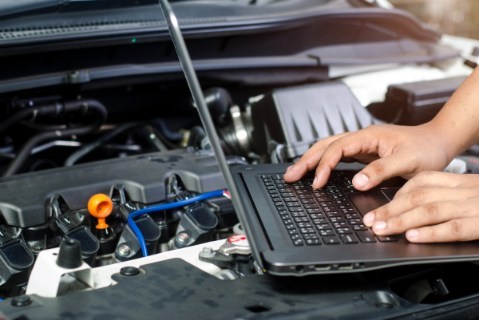
These take the form of lights in your dashboard. When you start a vehicle its computer checks out the operating systems e.g. Air Bag, Engine management & ABS Brakes to mention a few.
Problems show up as:
The warning indicator lights light up when you start the vehicle and then go out as the vehicles computer checks each system. If they don’t go out you have a problem. If they come on while you are driving you should stop and contact us to book a service right away, our team can tell you if it is something that should be actioner immediately and inform you if it is safe to drive on.
Solution:
The only solution is to have pop into the workshop and plug in a scan tool so they can ‘talk’ to the vehicles computer to find out what the fault is indicating.
Hint:
Did you know that when the Air Bag warning light is on your air bags WON’T work?
Do not ignore the warning indicator lights.
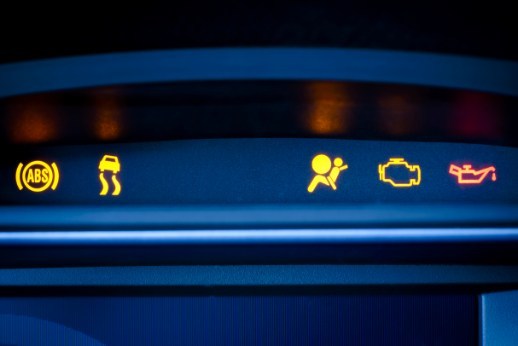
Automotive batteries are usually classified as lead-acid type.
In simple terms lead plates react with the liquid acid to produce an electrical current. This reaction would stop very quickly if the process was not reversed. The reversal process takes place as the battery is re-charged. The engine of your vehicle turns an alternator, which recharges the battery. The battery powers the starter motor, the ignition system and the lights.
Problems show up as:
The engine is slow to turn-over or won’t turn-over.
Lights won’t turn on
The radio won’t retain the pre-set stations
Headlights slowly loose brightness then go out.
White powder forms on the terminals. [The white powder is toxic and should not be touched] .
Solution:
Have the battery tested. We can do this very quickly and produce a report on the state of your battery.
Best case; the terminals need cleaning or the battery needs charging. Medium case; the battery needs replacing
Worse case; It’s not the battery but another part of the electrical system.
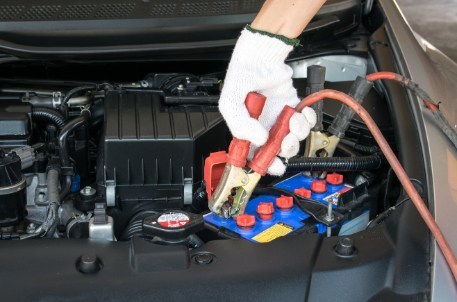
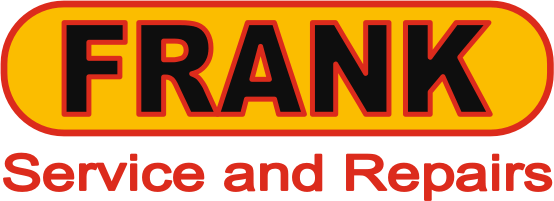
Frank Service and Repairs is your mobile mechanic for the Perth area.
10b Lever Place, Willagee WA 6156, Australia
